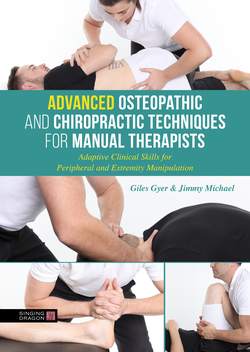Читать книгу Advanced Osteopathic and Chiropractic Techniques for Manual Therapists - Giles Gyer - Страница 14
На сайте Литреса книга снята с продажи.
Co-activation of the neuroendocrine system
ОглавлениеThe hypothalamus region is known for coordinating stress responses by activating the hypothalamic–pituitary (HP) axis and a neural pathway involving the PSNS. The hypothalamic–pituitary–adrenal (HPA) axis has been considered to be the central stress response system and is known to release adrenal glucocorticoid (cortisol), which is a class of corticosteroids that are well recognised in the literature for their anti-inflammatory and immunosuppressive actions (Ulrich-Lai and Herman 2009). On the other hand, as discussed above, the SNS has been reported to serve as a mediator between the somatic and supportive processes. Hence, it has been well established that both the SNS and HPA axis could play a significant role in the modulation of acute and chronic inflammation, and the neuroendocrine (SNS–HPA axis) mechanisms are involved in the pain relief and tissue-healing processes (Chrousos 2009; Ulrich-Lai and Herman 2009). These two systems have also been reported to work together, overlapping the underlying neural circuitry (Chrousos 2009). In addition, the evidence suggests that spinal manipulation could influence the activity of both the SNS and HPA axis. Several studies have assessed the effect of spinal manipulation on the HPA axis, and an immediate increase in serum cortisol levels following manipulation has been observed in both symptomatic and asymptomatic patients (Padayachy et al. 2010; Plaza-Manzano et al. 2014).
Considering the above facts, Sampath et al. (2015) hypothesised that there could be an association between SNS changes and HPA axis responses, and post-manipulation changes in the SNS might be accompanied by HPA axis changes. The authors proposed possible neural reflex pathways in support of this hypothesis. They suggested that HVLAT at the thoracolumbar segment of the spine would result in excitation of the preganglionic sympathetic cells and subsequent stimulation of mechanoreceptors. These inputs would then travel to several regions of the brain stem and subsequently would lead to opioid-independent analgesia by influencing the hypothalamus and PAG (periaqueductal grey) matter in the midbrain. The hypothalamic release of the corticotropin-releasing factor (CRF) would then occur to modulate the SNS and HPA axis response. The neuroendocrine (SNS–HPA axis) system would then release its end products (catecholamines and glucocorticoids) to initiate anti-inflammatory and tissue-healing actions. However, to date, only one study (Sampath et al. 2017) has been conducted to investigate the SNS–HPA axis response to manipulation in the same trial. Although this study reported a reduction in salivary cortisol level immediately after thoracic manipulation and observed an immediate effect of manipulation on the SNS, the clinical relevance of such changes is so far unknown. Therefore, more research is needed to determine the true clinical significance of neuroendocrine response following manipulation.
